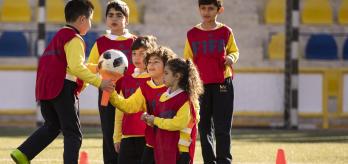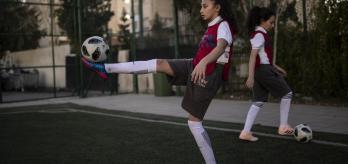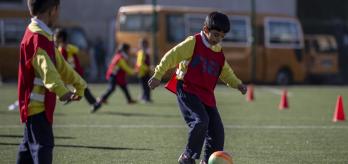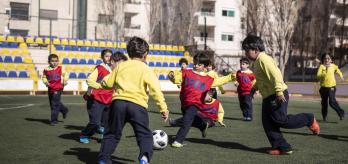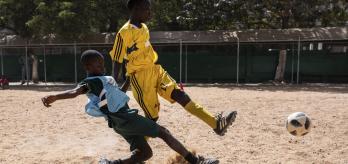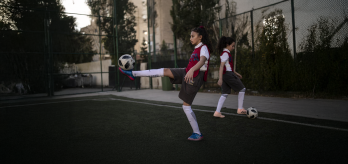In this instalment of FIFA’s Grassroots Coaching Essentials series, coach Stanley Gardiner introduces the concept of numeric progression games. This is a session design that encourages players between the ages of 8 and 12 to develop their technical and tactical skills through solving real-game problems. These activities promote good decision-making, teamwork, and tactical understanding, while still keeping the session fun and engaging.
Below, you will find a presentation video in which Stanley explains, through three key tips, how game-based activities can be used to include tactical concepts and critical thinking gradually without relying on lengthy explanations. Each activity builds on the last, creating a natural numeric and learning progression. Additionally, a written summary of each coaching tip follows the presentation, along with sample exercises that can be adapted for grassroots sessions.
Tip 1: Encourage problem solving
To help players develop key match-realistic skills, coaches should begin their sessions with a small-sided game that encourages problem solving and maintains a high level of involvement from all participants. In this section, Stanley highlights how these types of activities benefit young players in multiple ways:
- Develops critical thinking: Players are able to sharpen their decision-making abilities as they adapt to evolving situations and overcome challenges that they will encounter in a real match.
- Lots of touches of the ball: Practising in game-realistic scenarios allows players to have plenty of touches of the ball, building their confidence when in possession for the rest of the session.
- Provide opportunities for recovery: Remember to give players the opportunity to recover during the activity to ensure that the quality and effort levels remain consistent throughout.
Tip 2: Include competition
Stanley’s second coaching tip is centred on the importance of adding competition to boost motivation and engagement during numeric progression sessions. Here, he explores how incorporating a competitive element into game-like activities can create a more dynamic learning environment, while supporting individual and team development:
- Maintaining competition: Activities that mirror real match situations naturally bring in an element of competition, keeping the environment fun and engaging.
- Switch roles between players: Kids should have plenty of opportunities to experience different positions during the activity to bolster their understanding of the game.
- Encourages teamwork: Having competitive elements in games will encourage players to work together and collaborate in order to win, fostering chemistry within the group.
Tip 3: Add tactical principles
The final coaching tip to get the most from numeric progression games is to incorporate tactical principles into activities. This helps players to understand more complex aspects of the game without overloading them with information. In this section, Stanley explains how coaches can introduce tactical concepts gradually into game-like activities in a way that supports creativity and communication:
- Basic tactical concepts: Basic principles, such as holding as a set position, will help players build a stronger awareness of the tactical side of football.
- Encourage communication: Regular communication among the players should be encouraged by the coach which will improve their tactical understanding, as players become more aware of the positioning of their team-mates.
- Keep feedback minimal: Avoid giving players too many tactical instructions, and instead, encourage them to express themselves and play with creativity.
Key Take-aways
From the key insights shared by Stanley in this presentation, grassroots coaches should have a better understanding of why numeric progression games can be beneficial for a young player’s development and how to implement them correctly. Here is a summary of the main take-aways from this presentation:
- Eases players into real-match situations: Players begin to develop their ability to solve problems in small-sided scenarios before moving on to activities that reflect real-match situations with more players involved.
- Enhances creativity and self-expression: Possession-based games give players lots of time on the ball, building their confidence, and encouraging them to be inventive and try out new skills in a creative way.
- Introduces age-appropriate tactical principles: Coaches can start to bring in simple tactical ideas to help children gradually build a deeper understanding of how the game is played.


